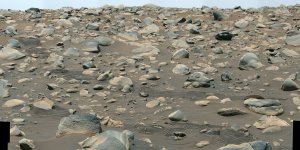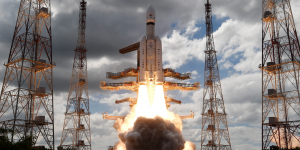| News / Space News |
India's Chandrayaan-3 Lander Successfully Lands on Moon
The Indian Space Research Organisation (ISRO) and Indians worldwide celebrated this achievement, positioning India as the fourth nation to achieve a spacecraft landing on the Moon, following the Soviet Union, the US, and China.

LVM3 M4, Chandrayaan-3 – Launch vehicle lifting off from the second launch pad of SDSC-SHAR, Sriharikota. Photo: Indian Space Research Organisation (GODL-India)
Remarkably, the Chandrayaan-3 mission marked the first-ever landing near the lunar south pole.
The ISRO executed an automatic sequence for the lander module's descent, activating an algorithm that assumed control once the spacecraft was positioned over the designated landing spot, guiding it safely to the Moon's surface.
The Chandrayaan-3 lander stands approximately 2 meters tall and has a mass slightly exceeding 1,700 kilograms.
Together with the rover, they carry six payloads dedicated to exploring the lunar south pole, a region believed to contain water ice, potentially serving as a vital resource for future Moon missions, supplying oxygen, fuel, and water.
Chandrayaan-3 is the third Indian lunar exploration mission under the ISRO Chandrayaan programme. It consists of a lander named Vikram and a rover named Pragyan, similar to those of the Chandrayaan-2 mission.
The propulsion module carried the lander and rover configuration to lunar orbit in preparation for a powered descent by the lander.
Chandrayaan-3 was launched on 14 July 2023.
The lander and rover landed at the lunar south pole region on 23 August 2023 at 18:02 IST, making India the first country to successfully land a spacecraft near the lunar south pole and the fourth country to soft-land on the Moon. (Tasnim News Agency/Wikipedia)
YOU MAY ALSO LIKE





